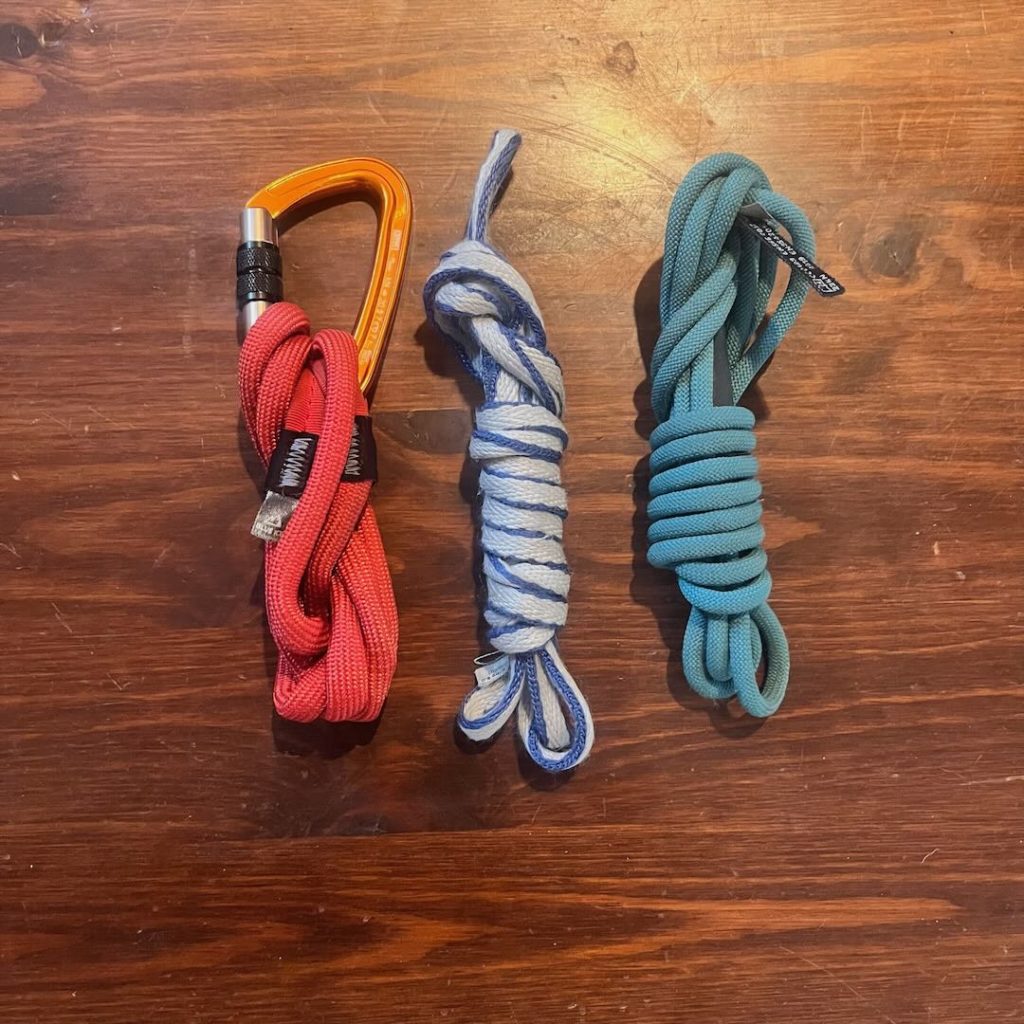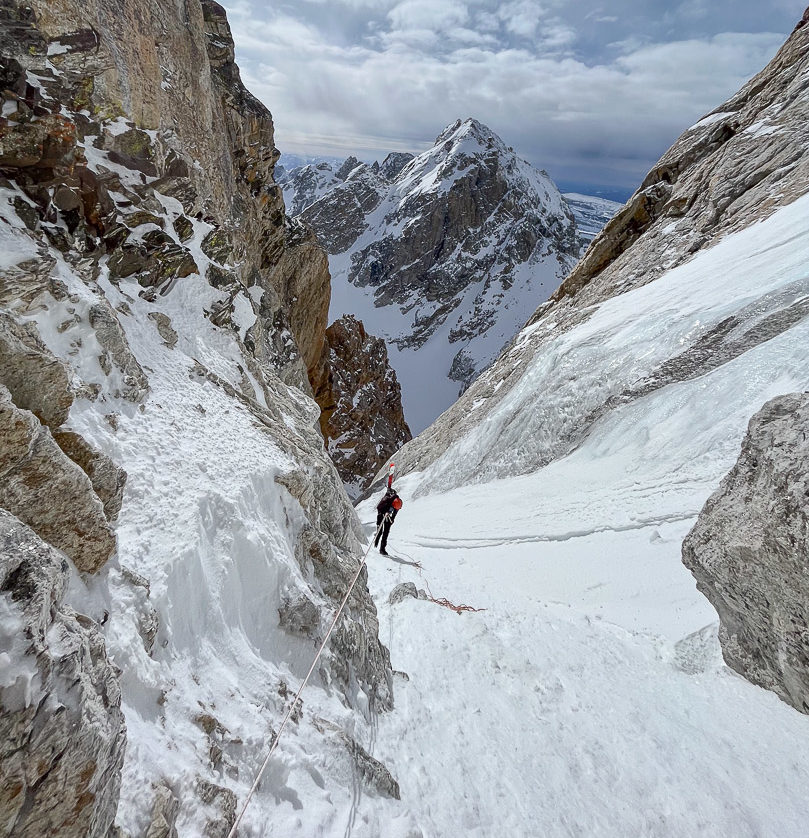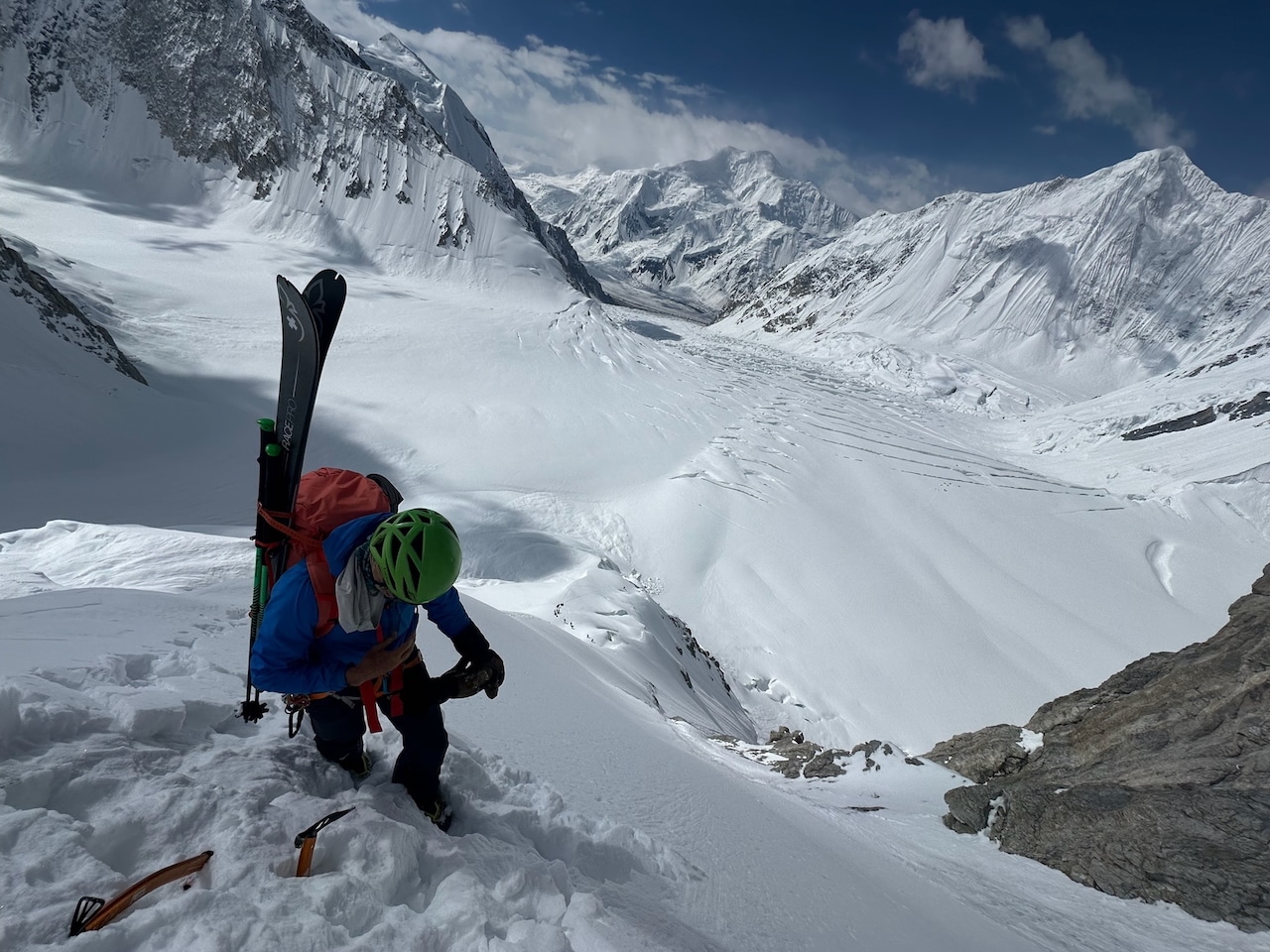Continuing our dissection of ski mountaineering rappel systems, we are exploring the various options for rappel extensions/tethers and third hands. There is significant overlap here with standard rock climbing gear and techniques, but our needs as skiers, especially skiers with skinny ropes, are a bit different.
You can find part one of our rappelling on skinny ropes series here.
Learn more about rappelling for ski mountaineers in this primer from Sam Hennessey here.
Why you should use a tether and third hand
Starting close to square one, why do you want this extra gear in the first place? There is certainly some appeal to my minimalist brain to a rappel kit consisting of a single locking carabiner and a belay device.
Starting with the tether/extension component, this serves a few main purposes. First, the tether component is what we use to attach ourselves to an anchor. Even with a single rappel and an anchor on moderate or steep snow, it is best practice to tether oneself to the mountain when possible. This secures your stance to assess the anchor, setup the rappel, and test your rappel setup before committing your full weight to it. In a skiing context, I will often stab my poles or an ice tool vertically into the snow and clip my tether in while transitioning from skis to crampons, or vice versa.
An extended rappel offers many benefits over rappelling from the belay loop on your harness. It gives the rappeller more space to hold the brake strands, as well as reducing the force needed to slow/stop the rappel. An extended rappel also makes it easier to pre-rig a rappel–see this excellent post from Alpine Savvy for more on that.
Last, extending the rappel allows us to rig a friction hitch backup off the belay loop, which is especially important given that many ultralight ski harnesses aren’t made with independent load bearing leg loops (a common place to attach a third hand).
The third hand or friction hitch rappel backup is generally commonplace in rock climbing, but in my view, especially important when skiing. The third hand gives us a backup, such that if the rappeller is disabled in some way during their descent, causing them to lose control of the brake strands, the friction hitch will tighten down and stop the rappeller’s descent. Given the risk of sluffing, avalanches, or rockfall in many places we ski, it is extremely important to minimize the risk of losing control while rappelling.
Tether Options
There are a plethora of super functional tether options out there–whether you want a purpose built, a home-tied cord option, or something fashioned out of a climbing sling. Relative to climbing, there are a few things worth considering for skiing. First off, in a similar way that we talk about ultralight ropes and harnesses in the context that they play a small role in our overall ski day, I often opt for a lighter and more compact tether than I may for rock climbing. The second consideration is the necessary length and adjustability for skiing. With the possibility of skiing into an anchor and having skis in the way of clipping a short tether, or perhaps early season or in a low snow year, the normal anchors in a line are high above the snow surface, a long tether can be super handy.
Ideally, whatever tether you choose should also have a short attachment to clip in a rappel device for an extended rappel. Around 6” is a good minimum extension, but longer can work well too. The key here is to be sure the device doesn’t interact with the third hand below it, as this can inhibit the “locking” of the third hand. Here are some of the options and techniques I have seen or explored myself:







Leave a Reply
You must be logged in to post a comment.